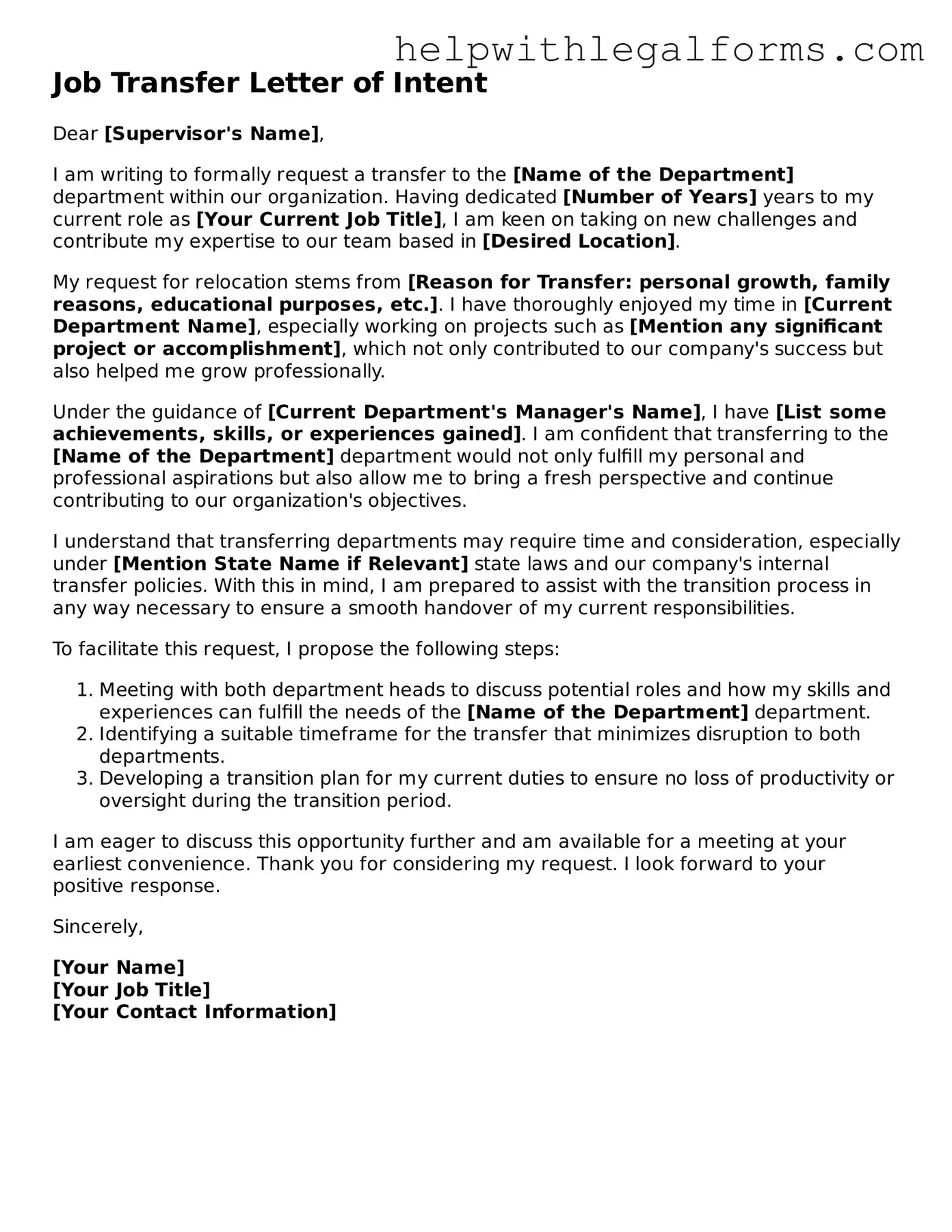Job Transfer Letter of Intent
Dear [Supervisor's Name],
I am writing to formally request a transfer to the [Name of the Department] department within our organization. Having dedicated [Number of Years] years to my current role as [Your Current Job Title], I am keen on taking on new challenges and contribute my expertise to our team based in [Desired Location].
My request for relocation stems from [Reason for Transfer: personal growth, family reasons, educational purposes, etc.]. I have thoroughly enjoyed my time in [Current Department Name], especially working on projects such as [Mention any significant project or accomplishment], which not only contributed to our company's success but also helped me grow professionally.
Under the guidance of [Current Department's Manager's Name], I have [List some achievements, skills, or experiences gained]. I am confident that transferring to the [Name of the Department] department would not only fulfill my personal and professional aspirations but also allow me to bring a fresh perspective and continue contributing to our organization's objectives.
I understand that transferring departments may require time and consideration, especially under [Mention State Name if Relevant] state laws and our company's internal transfer policies. With this in mind, I am prepared to assist with the transition process in any way necessary to ensure a smooth handover of my current responsibilities.
To facilitate this request, I propose the following steps:
- Meeting with both department heads to discuss potential roles and how my skills and experiences can fulfill the needs of the [Name of the Department] department.
- Identifying a suitable timeframe for the transfer that minimizes disruption to both departments.
- Developing a transition plan for my current duties to ensure no loss of productivity or oversight during the transition period.
I am eager to discuss this opportunity further and am available for a meeting at your earliest convenience. Thank you for considering my request. I look forward to your positive response.
Sincerely,
[Your Name]
[Your Job Title]
[Your Contact Information]
